The costume is a vivid presentation of the style of each era. Before the Chinese New Year, the National Museum of China launched the "Ancient Chinese Costume Culture Exhibition". The exhibition attracted many Chinese culture lovers, including those wearing Chinese Hanfu costumes. In addition to the display of traditional costumes, the exhibition also includes many artifacts related to costume production, costume images, and clothing etiquette, providing a complete, systematic, and expansive overview from the Stone Age to the Ming and Qing dynasties.
Rich in artifacts and detailed panels, there are lines of costume development stretching back 5,000 years, as well as many aspects of lifestyle, cultural exchange and ritual innovation, and even the finer points of ornamentation, belts, headwear, and makeup, which are also not to be missed.
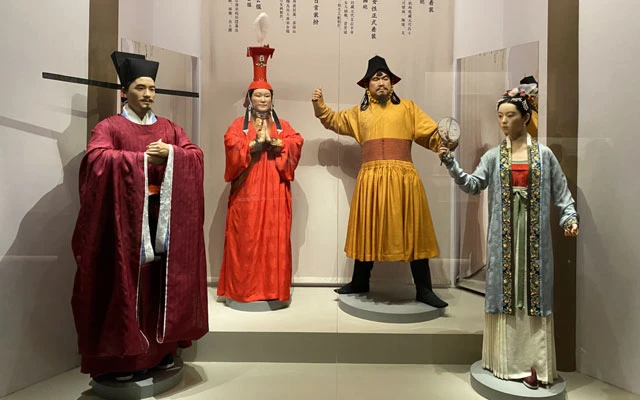
One of the highlights of the exhibition is the use of 15 restored portraits dressed in the costumes of different dynasties and identities to showcase the complete wardrobe of different dynasties. Taking this opportunity, Qianmo Xueshe will select a few of these restored portraits to introduce you to the changes in ancient women's Hanfu clothing.
01 Han Dynasty Shenyi with Long Sleeves
Shenyi (深衣) were the most common women's Hanfu clothing in the Han Dynasty, and could be worn by young and elderly alike in daily life. It wraps around the body and is held in place by a belt. They were tight and narrow throughout, long enough to drag the ground, and generally flared at the hem, without showing their feet, which was loved by Han Dynasty people.
When it comes to the beauty of the Han Dynasty, the first one must be the lithe Zhao Feiyan. The aesthetics of Han Dynasty people favored such slender and soft women, so both the figurines of Han Dynasty maids and the delicate women in the portrait give people a sense of softness and leanness.
The Shenyi make the woman look light and fit the aesthetic pursuit of the Han dynasty. However, this form of clothing is not very suitable for working people.
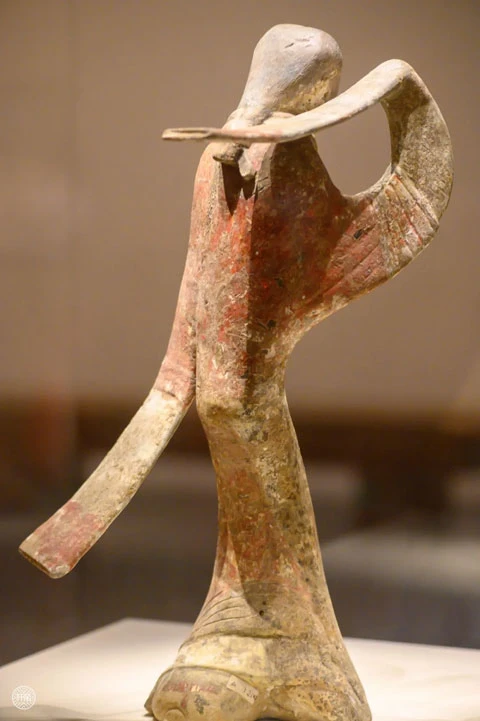
Painted figurines of female dancers with long sleeves - Han Dynasty - Collection of the National Museum of China
This cultural relic depicts a dancing maid, with one hand bent in front, the sleeves stacked in the bend of the arm with the upward movement; with one hand swinging slightly behind, the sleeves flung out naturally with the movement; the skirt outlines the slender waist, and the long hem covers the feet, adding a mystery.
The part in front of the chest of the dress is called "Jin (襟, lapel)", also called "Ren (衽, overlapping)". In the Han Dynasty, the lapels of the Shenyi were wrapped around the body in the direction of the right hand, which was called "You Ren (右衽, right overlapping)". Confucius once praised Guan Zhong: If there was no Guan Zhong, he might be a barbarian with left-overlapping. Confucius took the hair binding and right overlapping as the symbol of Huaxia people.
02 Hu Clothing Becomes Fashionable in Tang Dynasty
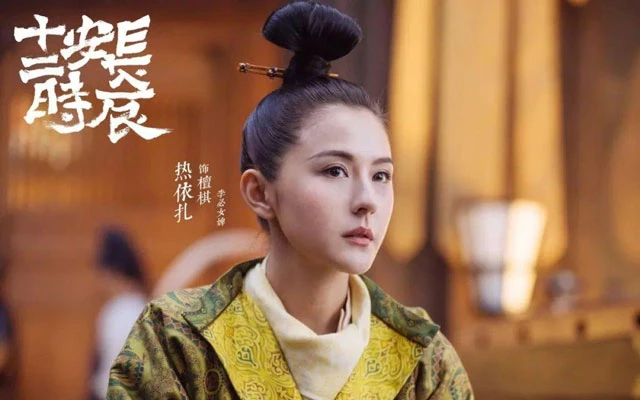
Stills of The Longest Day In Chang'an
With the openness and cultural diversity of the Tang Dynasty, women in the Tang Dynasty pursued distinctive color schemes, exaggerated makeup, and even wore Hu clothing and men's clothing. As a kind of Hu clothing that could be worn by both men and women, the Fanling robe (翻领袍, lapel robe) was loved by all classes.
Women in the Tang Dynasty had a rich recreational life, they would ride horses and shoot arrows, also play cuju and polo. This kind of Fanling robe, which is convenient for walking and sports, with hem not dragging the ground and tight cuffs, became one of the daily dresses for young girls.
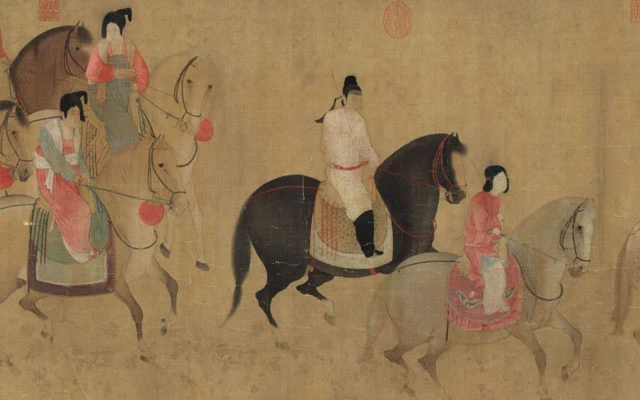
Lady Guoguo's Spring Outing - Song copy - Liaoning Provincial Museum, China
Women's Fanling robe compared to men's, the color is more vivid, the color scheme is bolder. Men's lapel robe is mostly solid color, no pattern, only in the lapel out to reveal more bright colors. And women's lapel robe not only bright colors, and will have different styles of embroidery patterns.
Images of women in lapeled Hu costumes were common in wall paintings and calligraphy during the Tang Dynasty. This is an image of a lady-in-waiting painted on a tomb wall of a Tang aristocrat, wearing a full set of Hu clothing, including a lapel robe and striped pants. This shows that the tradition of wearing Hu clothing was widely popular among the noble class in the Tang Dynasty.
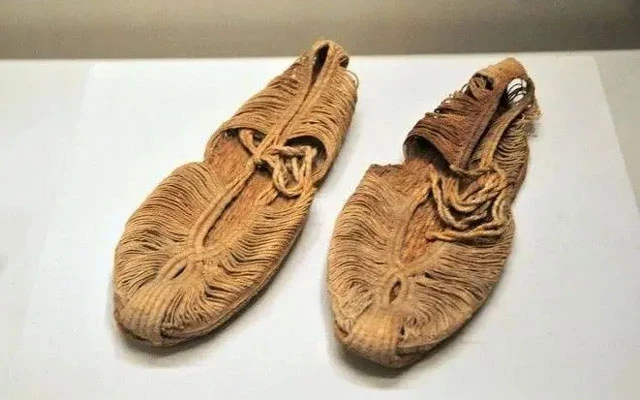
Sisal Shoes - Tang - Collection of the National Museum of China
The restored portrait girl in the display case is wearing a pair of sisal shoes under her feet. This pair of sisal shoes is physically traceable, the original was unearthed in Turpan, Xinjiang, where the unique climate made it possible for these thousand-year-old Tang Dynasty sisal shoes to remain intact and are now housed in the National Museum of China.
Tang Dynasty women were probably better known for their sexy image, in addition to the valiant and heroic appearance of men in Hu clothing. The exhibition hall has restored the image of a Tang Dynasty noblewoman in the famous "Court Ladies Adorning Their Hair With Flowers (簪花仕女图)", rich and open, graceful and luxurious.
03 The Elegance of the Song Dynasty People
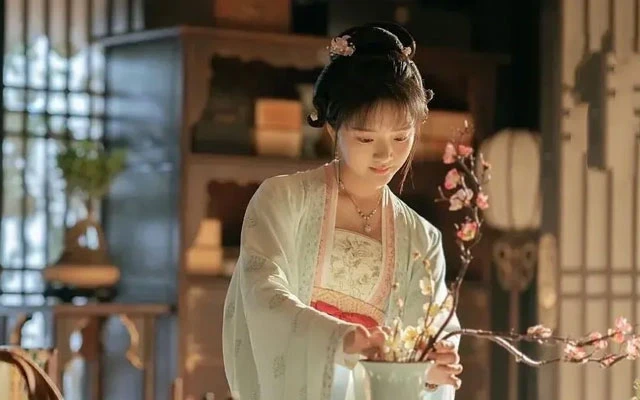
Stills of Serenade of Peaceful Joy
The social style of the Song Dynasty was very different from the open and diversified style of the Tang Dynasty. The Song Dynasty focused more on elegance and restraint, so the costumes of the Song Dynasty changed to a great extent from the shape to the color, and the women's attire tended to be conservative and plain.
Song Dynasty women, popular wear "Beizi (褙子)". The Beizi is a pair of lapels, rather is a wear in the outermost coat. There are both short and long versions of the Beizi, the short Beizi just above the waist, the long Beizi is usually above the knee. Inside the Beizi, Song Dynasty women would match a one-piece Moxiong and wear pleated skirts underneath.
The Beizi was very popular in the Song Dynasty, from the royal noblewomen down to the common people, and could be worn on almost any occasion. And the Song people who loved beauty had a great variety of patterns on the Beizi.
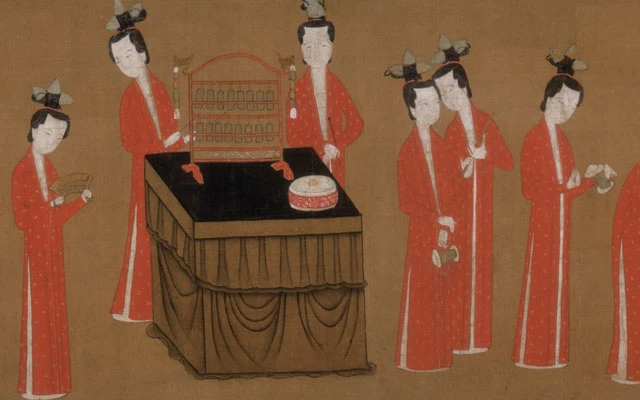
Ge Le Tu (partial) - Song - Collection of the Shanghai Museum
The woman in the picture wears a long red Beizi with a white Moxiong and pleated skirt, and is preparing for a song and dance performance. This attire was also featured in the TV series "Serenade of Peaceful Joy".
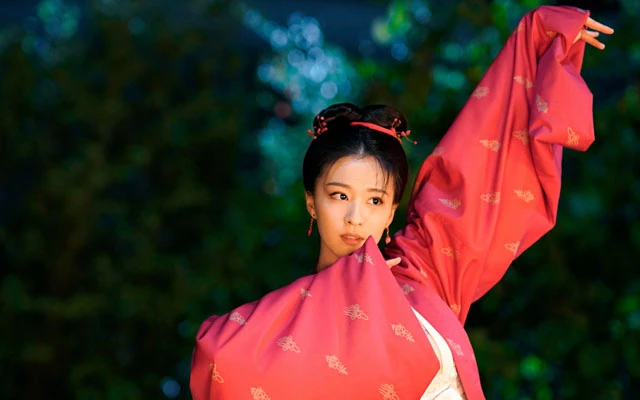
▲Stills of Serenade of Peaceful Joy
Song Dynasty women also liked to put many flowers in their hair buns, and the restored portrait's head restores this image in great detail. Flowers were an essential part in Song people's life, and unlike the exaggerated peonies of the Tang Dynasty, the flowers pinned on hair buns in the Song Dynasty were smaller and more delicate, sometimes even using fresh flowers directly instead. You may not expect that men in the Song Dynasty also liked to wear flowers.
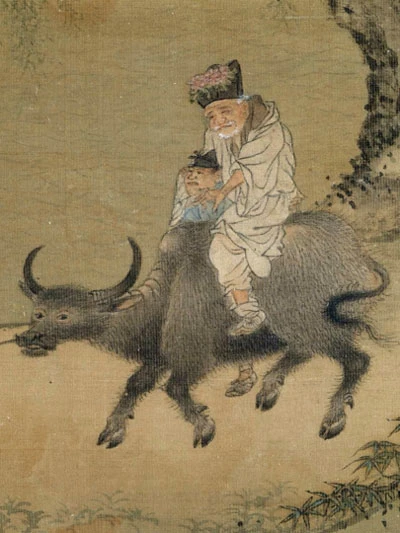
Drunken Return from the Chunshe - Southern Song Dynasty - Collection of the Museum of Fine Arts, Boston, USA
04 Ming-style Aoqun: recovery Yi and Guan system
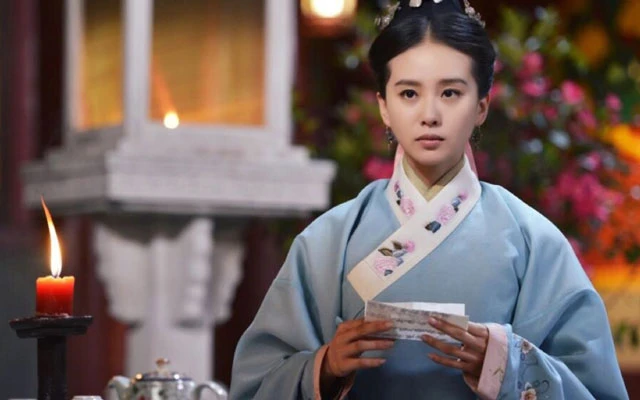
Stills of The Imperial Doctress
After ascending to the throne, Zhu Yuanzhang, the founding emperor of the Ming Dynasty, ordered the restoration of the Tang system of clothing and crown to revive the orthodox status of Han costume. The clothing system was revised in detail for more than 20 years, and the hierarchy was strict and elaborate.
Women's Hanfu clothing in the Ming Dynasty was mostly in the form of an Ao(袄, jacket) and Qun(裙, skirt). The shape of the upper jacket was mostly slit on both sides, with long sleeves. The jacket is divided into short and long according to the length, with the knee as the boundary, so it can be seen that this woman is wearing a short jacket.
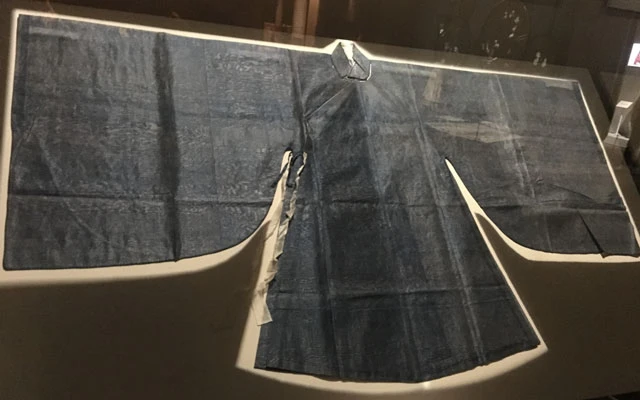
Women's long jacket with blue dark floral pattern - Ming - Collection of Confucius Museum
The skirt worn by women underneath is called the Mamian skirt. The skirt has four front and back skirt doors, two overlapping, both dignified and easy to move, is a very popular style of the Ming and Qing Dynasties. According to the dress regulations of the Ming Dynasty, people in the merchant and other industries were not allowed to wear clothes made of top quality fabrics, and embroidered patterns were not allowed on clothes, only nobles and officials were allowed to weave gold or embroider flowers on clothes. Thus, the identity of the restored portrait of the Ming woman should be the wife of an official family.
Ming Dynasty women's hair ornaments to restore the Tang system, available gold and silver, and other metals to build. The handicraft industry of the Ming Dynasty was very developed, and the craftsmen made gold and silver jewelry with a process called filigree. This Ming Dynasty handicraft masterpiece made the jewelry more three-dimensional, allowing the most elaborate compositions to be made with the least amount of raw materials, while also making the gold and silver itself soft and light.
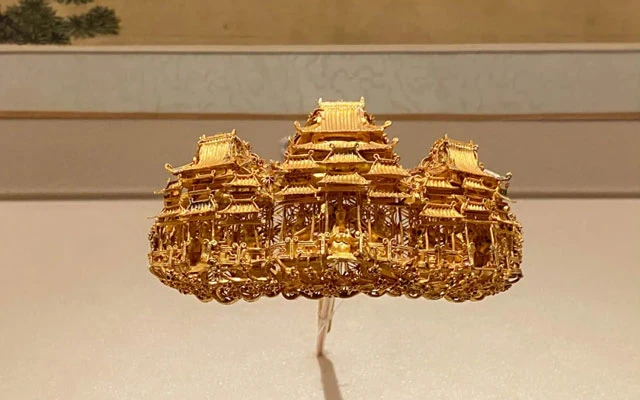
Gold hairpin with figures in a pavilion (Fenxin) - Ming Dynasty - Collection of National Museum of China
This gold hairpin is used directly behind a woman's hair bun and is called a Fenxin (分心).
These two gold hairpins are used as a set with the one above, on both sides of the bun. There are many other hairpins of different materials, such as these, collectively known as the Toumian (头面). Although the process of combing when this kind of hair bun is complicated, but the beauty of the absolute first-class.
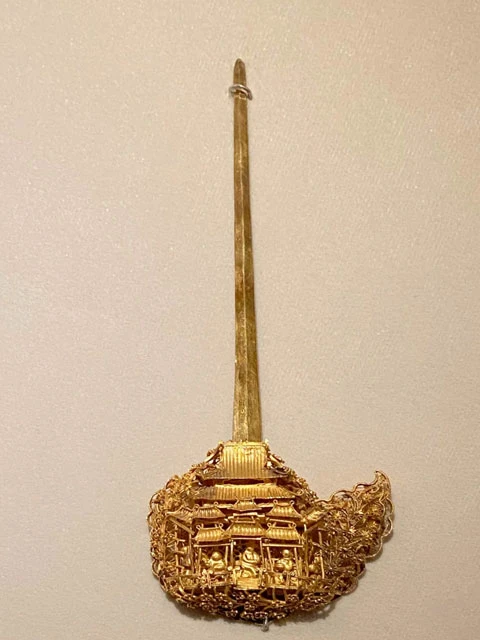
Gold hairpin with figures in a pavilion - Ming Dynasty - Collection of National Museum of China
After Zheng He went to the West during the Yongle years, he brought back high-grade gems such as rubies and sapphires that were produced overseas, and the gold and silver hair ornaments embedded with gems gradually led to a new trend.
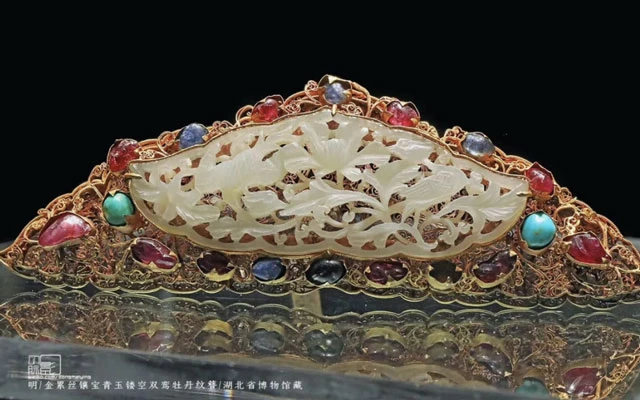
Gold filigree with precious green jade openwork peony hairpin - Ming Dynasty - Collection of Hubei Museum, China
05 Qing Dynasty: Qitou & flowerpot shoes
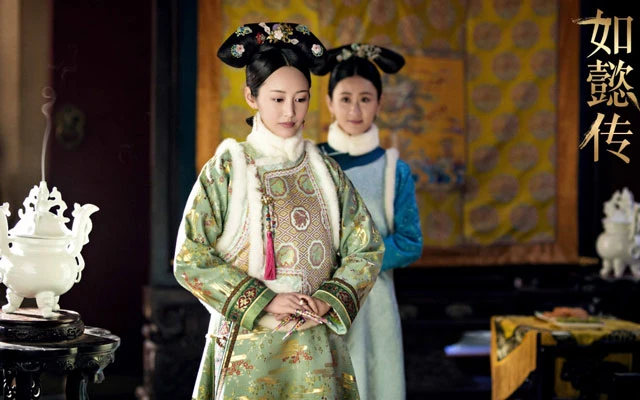
Stills of Ruyi's Royal Love in the Palace
After the establishment of the Qing dynasty, the abolition of the original clothing system, Han Chinese men shaved their hair and changed their clothes. However, for women's attire, there were not too many constraints.
Women's clothing in the Qing Dynasty, the appearance of the major film and television dramas are not the same, but they all wear Wanxiu (挽袖) shirts, the outer covering Kanjian (坎肩), feet on the flowerpot shoes.
The hairstyle of the Qing Dynasty women was called Qitou (旗头), and the early Qitou went through continuous improvement of hairstyles before finally evolving into the Dalachi (大拉翅). Dalachi in the late Qing Dynasty was very popular, old photos often appeared with such hairstyles.
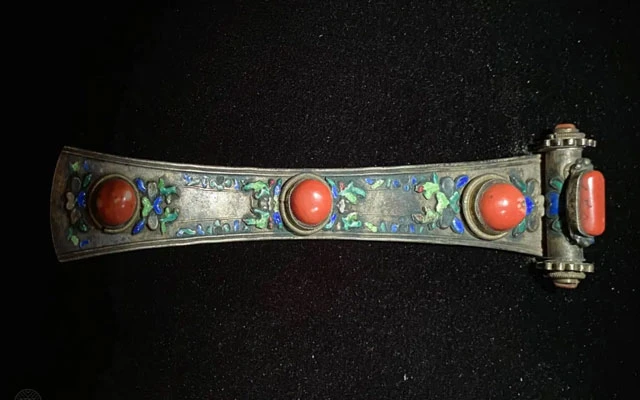
Bianfang - Qing dynasty - Collection of the Shenyang Palace Museum
The headpiece used to hold the hair in place is called a Bianfang (扁方), a flat one-shaped special large hairpin. In the early days, the hair was wrapped directly on top of the flat square for fixing. In the later period, the flat square was only used as an accessory and was placed at the very top of the Dalachi.
In the noble class of the Qing Dynasty, there were many kinds of ornaments inserted on women's flag heads, except silver ornaments, flower wrapping, velvet flowers, hairpins with Tian-Tsui, tassel, and so on.
Qing Dynasty women, they generally began to wear flowerpot bottom shoes at the age of 13 or 14. Flowerpot bottom shoes with wood as the bottom, also known as "high bottom shoes", the general flowerpot bottom shoe bottom height between 5-16 cm, but the highest known flowerpot bottom shoes root up to 25 cm.
06 Not just ancient women's Hanfu clothing
The "Ancient Chinese Costume Culture Exhibition" at the National Museum of China focuses on the history of costume development, the development of costume, and the historical and cultural connotations behind it.
From the earliest days when the role of the costume was to keep warm, to the pre-Qin period when the basic style of the Hanfu costume was established, to the time when clothing and etiquette complemented each other, to the time when there was a clear system, to the time when it became a unique cultural identity. This exhibition provides a comprehensive and systematic history of the development of costume through six historical periods, containing thousands of years of accumulation and innovation.
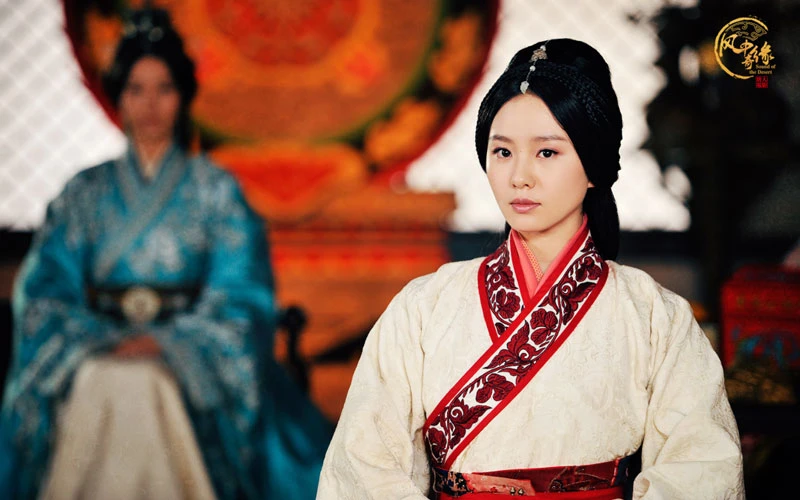
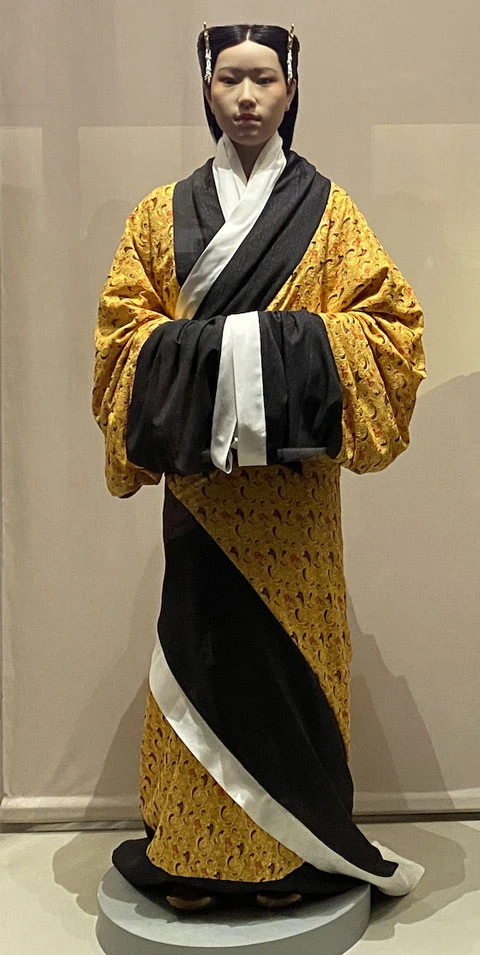
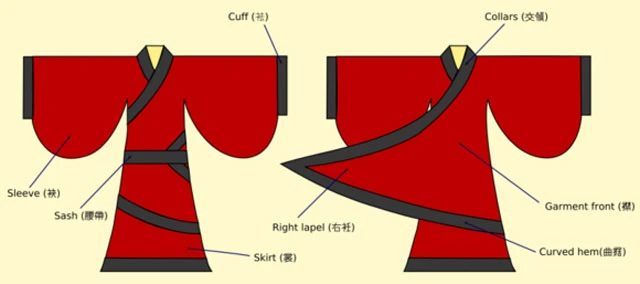
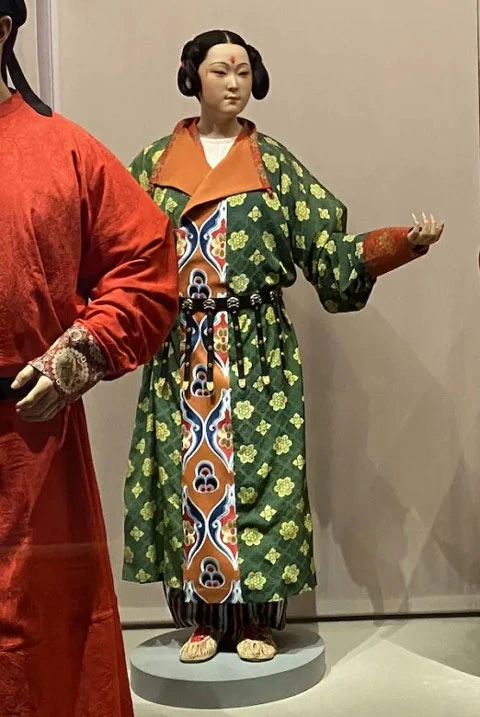
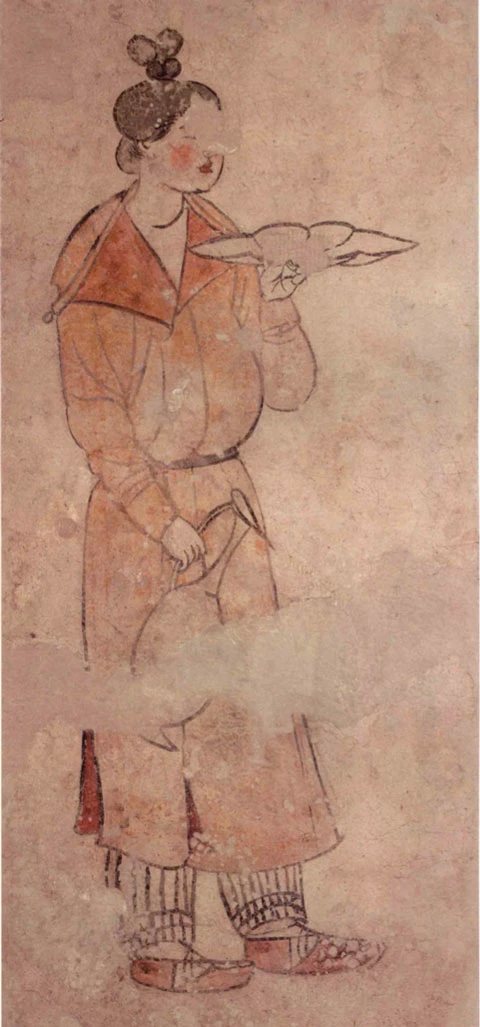
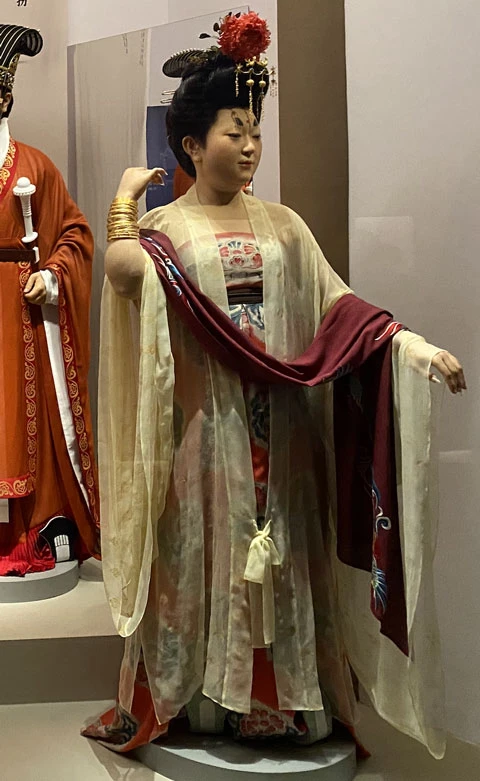
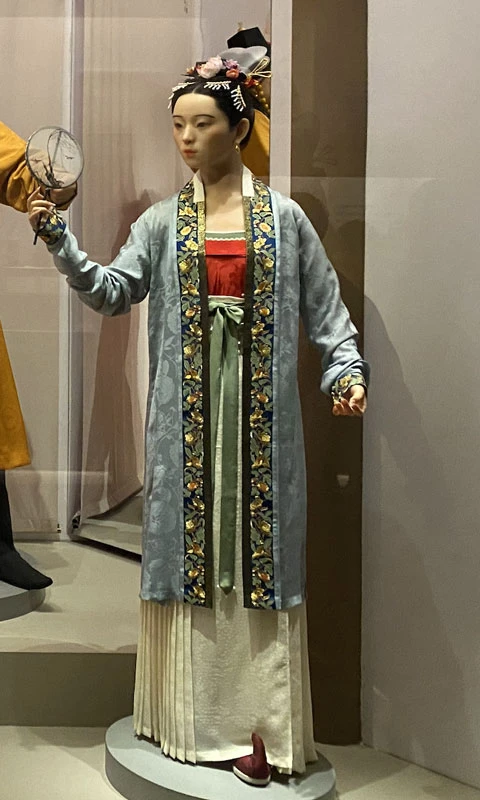
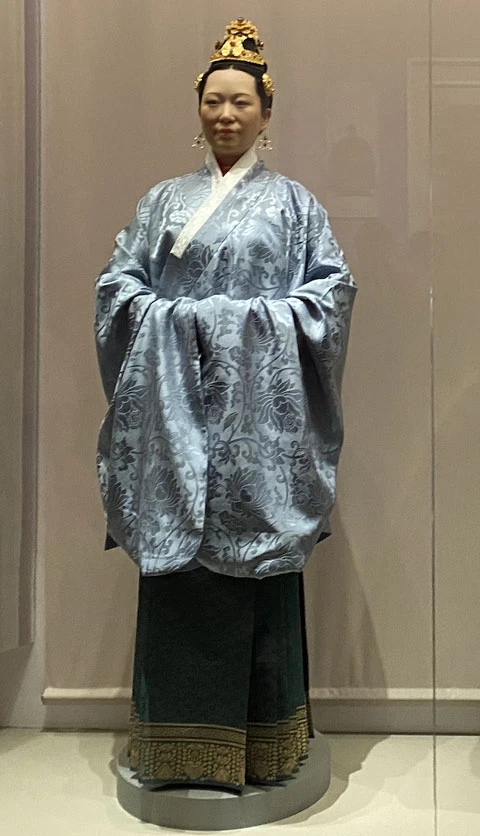
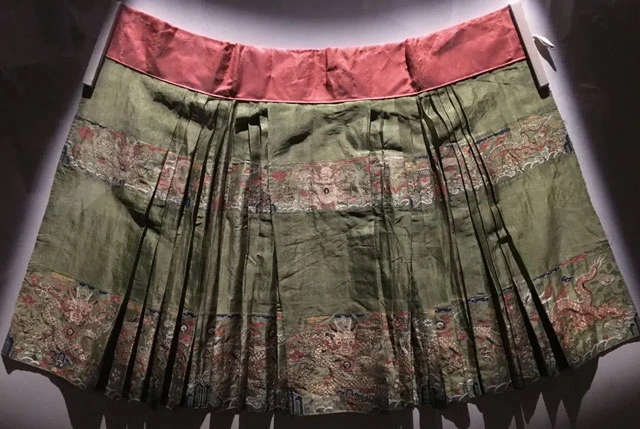
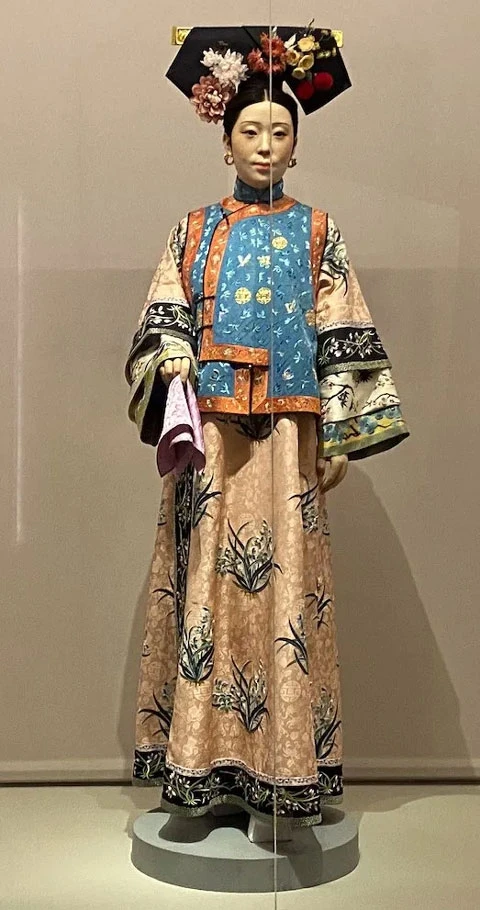
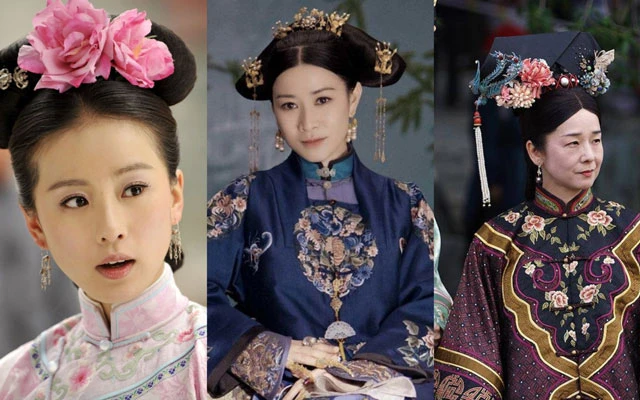
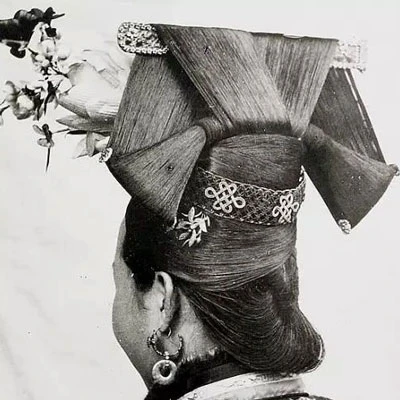
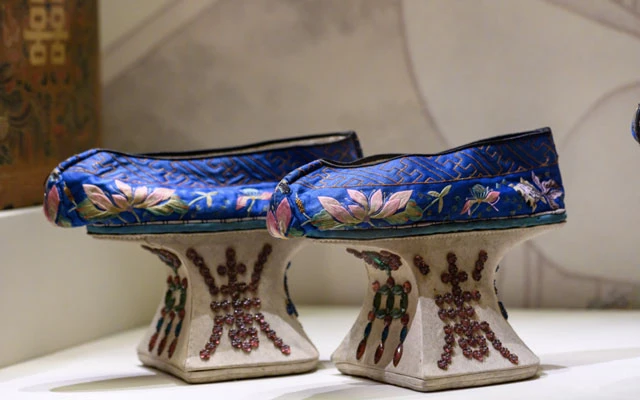
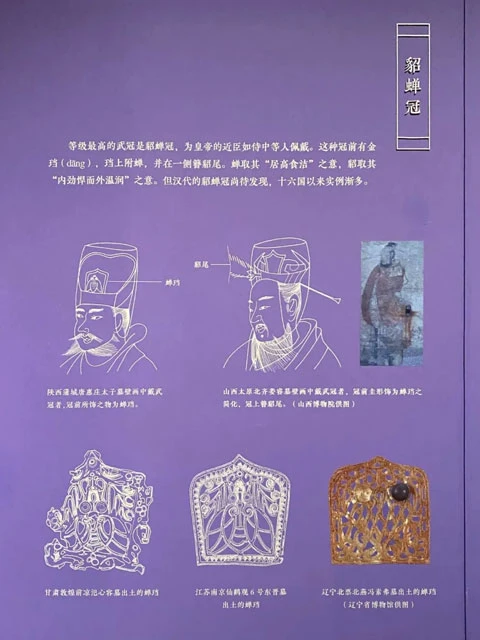
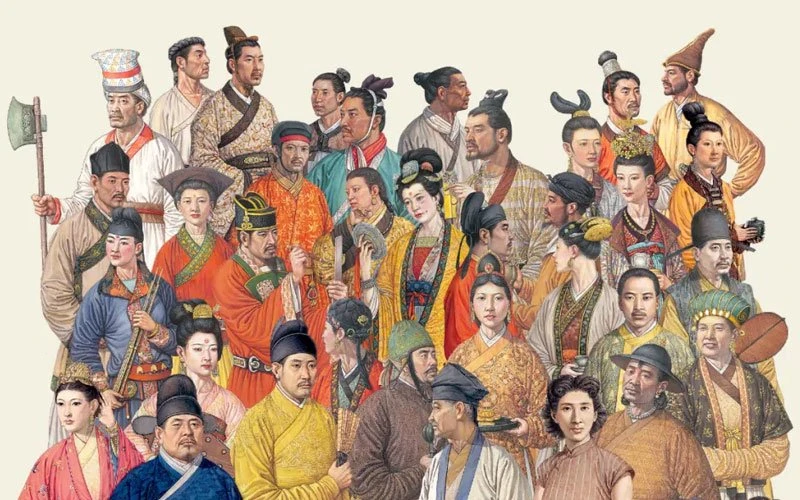
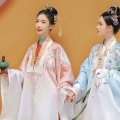

I am new to the group. I very much enjoyed and appreciated this article and the gorgeous accompanying photos. I wished that I lived in proximity to this wonderful exhibition. My only question has to do with the fact that it focuses on the fashions of the ruling Manchu people during the Qing Dynasty whereas prior to that the focus was ostensibly on the fashions of the Han Chinese. I understood that the Han Chinese continued wearing variations of the hanfu and did not necessarily adopt Manchu dress in full. Furthermore, among the upper- class Han women, during this period, the practice of bound feet would have been widespread. Therefore, the notion of wearing "flower pot" shoes of the Manchus would have been impossible. Correct me if I'm wrong. If I am correct, I wish there would be more Chinese historical fashion exhibitions that would examine Han Chinese clothing under Manchu rule (or under Mongol rule during the Yuan Dynasty) as well as those of sizable ethnic groups. Except for imposing the Manchu hairstyle on Han Chinese men, the Qing apparently allowed China's various ethnic groups including the Han Chinese themselves to live, dress, etc. as they always had, or so I had read. Again, I'd welcome any additional information. I'm a 3rd generation American of Japanese ancestry who teaches Asian history and regards fashion as offering so many ways to examine a society at a particular time. 😊
Thank you for reading and for commenting on this article. First of all, one thing I have to admit is that most of the styles of hanfu and Qing Dynasty clothing that appear in this article belonged to the nobility or people of higher rank to wear in ancient China. Much less attention was paid to the style of dress of the common people. And selected are the ones with the most character. So readers may very well visualize the changes in dress from one dynasty to the next, but it is undeniable that dress changes throughout history hardly ever change immediately with the change of dynasties.
Also, you mentioned flower pot shoes. my opinion is that ordinary Han Chinese women probably wore flower pot shoes less often in their daily life, but if they were in the court or the residence of high-ranking officials, flower pot shoes appeared more frequently. I remember that in the early Qing Dynasty, a number of policies were implemented and Han Chinese women were allowed to continue to wear Hanfu. And I searched for an interesting information. "After the reigns of Emperor Qianlong and Emperor Jiaqing, many Manchu women began to imitate Hanfu attire. They added wide sleeves to their originally narrow and long garments, or widened the sleeves of their robes. They also adopted the practice of foot binding, which greatly angered Emperor Renzong and Emperor Xuanzong. In response, they issued successive decrees prohibiting these practices and made it clear that thorough investigations would be conducted. Those who violated these orders would be punished severely without any leniency whatsoever." 😂
If you're interested, you can read this article to learn more about the exhibition (although it‘s ended): https://www.newhanfu.com/12312.html
Great job 😍